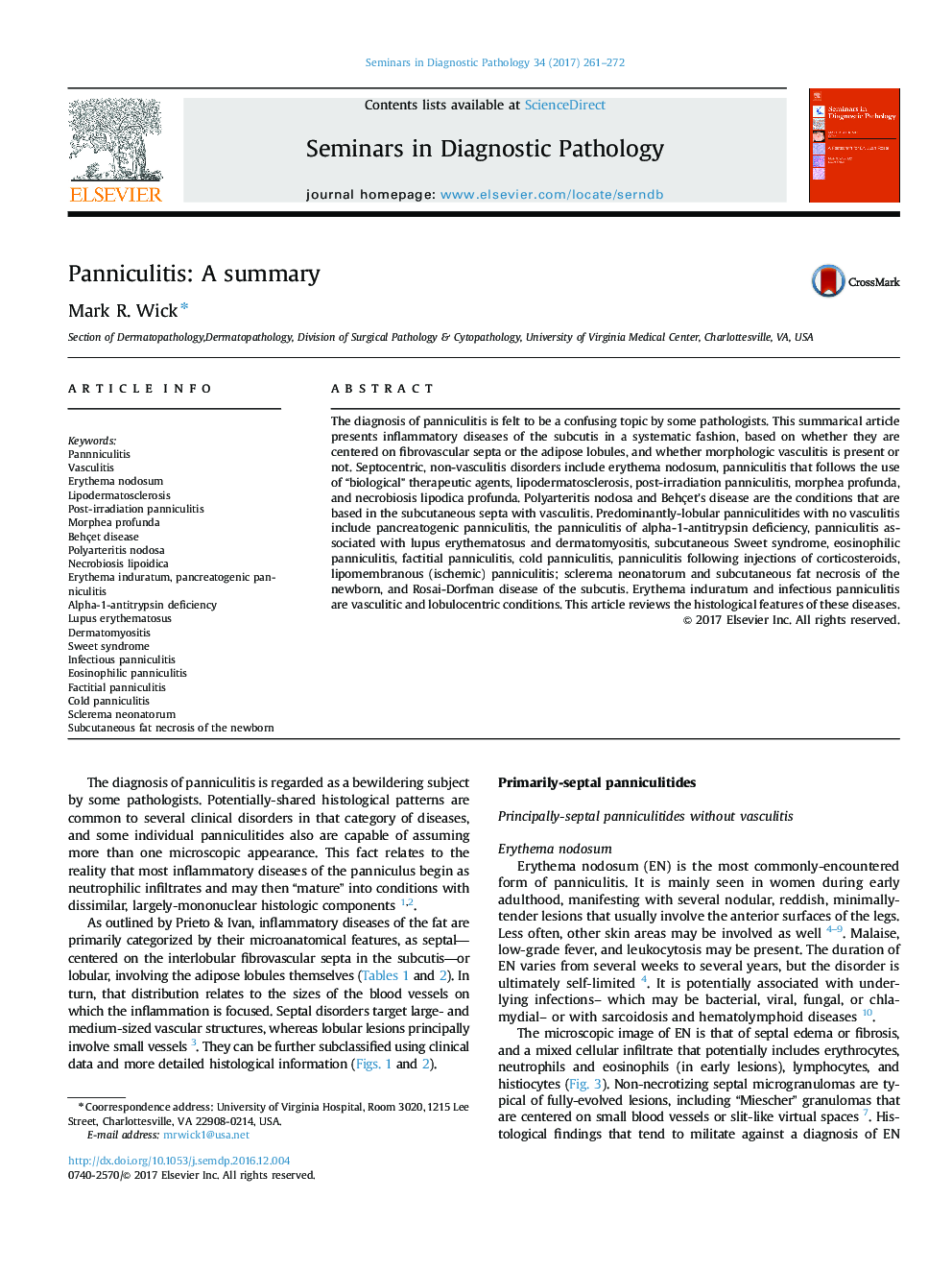| Article ID | Journal | Published Year | Pages | File Type |
|---|---|---|---|---|
| 5716693 | Seminars in Diagnostic Pathology | 2017 | 12 Pages |
Abstract
The diagnosis of panniculitis is felt to be a confusing topic by some pathologists. This summarical article presents inflammatory diseases of the subcutis in a systematic fashion, based on whether they are centered on fibrovascular septa or the adipose lobules, and whether morphologic vasculitis is present or not. Septocentric, non-vasculitis disorders include erythema nodosum, panniculitis that follows the use of “biological” therapeutic agents, lipodermatosclerosis, post-irradiation panniculitis, morphea profunda, and necrobiosis lipodica profunda. Polyarteritis nodosa and Behçet's disease are the conditions that are based in the subcutaneous septa with vasculitis. Predominantly-lobular panniculitides with no vasculitis include pancreatogenic panniculitis, the panniculitis of alpha-1-antitrypsin deficiency, panniculitis associated with lupus erythematosus and dermatomyositis, subcutaneous Sweet syndrome, eosinophilic panniculitis, factitial panniculitis, cold panniculitis, panniculitis following injections of corticosteroids, lipomembranous (ischemic) panniculitis; sclerema neonatorum and subcutaneous fat necrosis of the newborn, and Rosai-Dorfman disease of the subcutis. Erythema induratum and infectious panniculitis are vasculitic and lobulocentric conditions. This article reviews the histological features of these diseases.
Keywords
Related Topics
Health Sciences
Medicine and Dentistry
Pathology and Medical Technology
Authors
Mark R. Wick,
